2019 Subaru Ascent Vs Honda Pilot Vs VW Atlas: 3-Row SUV Comparison

Crossovers are getting bigger and bigger to accommodate the needs of the average family. We brought out a trio of new spacious, feature filled and impressive three-row crossovers to see how they compare to one another.
The three vehicles are the Volkswagen Atlas, the Honda Pilot, and the Subaru Ascent. Each is fully loaded with all-wheel drive and costs under $50,000. The three of these have their own unique qualities but only one will be crowned the best of the three. Let’s dive into it.
Get a Quote on a New Subaru Ascent, Honda Pilot, or Volkswagen AtlasThird Place: VW Atlas
The Volkswagen comes up a little short in this group, despite having the most space. It’s incredible just how much cargo space is offered in the Volkswagen offering, ranging from 20 cubic feet with the seats up to 96.8 cubes with all the seats down.
Keep those rear seats up, and you’ll be impressed with how spacious the Atlas is too, but there are a few downsides to the interior. Particularly the quality of the materials in the cabin are really below the standard set by the other two vehicles. Not only are the plastics hard, but the cabin is unsightly, boring and drab to be in.
The upside to the cabin is that the driver is treated to a very gorgeous, high-tech virtual cockpit that is so unique and special in comparison to what the other vehicles feature. This is an impressive piece of technology that brings a ton of information right to the driver. The map display, in particular, is great and helpful especially during those long wandering family road trips. The infotainment system has a fairly steep learning curve, but once you get to know it, all is well.
ALSO SEE: Top 10 Best Diesel Cars You Can Buy in the US
Powering the Atlas is a 3.6-liter V6 engine, which is paired to an eight-speed automatic. The 4Motion AWD system is one of the more interesting in this trio. It has a number of settings to provide optimal traction in specific on-road and off-road conditions. It has an on-road mode with eco, sport and custom settings, as well as snow, automatic off-road and custom off-road setting.
The powertrain is good, eager to get the Atlas going right off the line. Power is good, and like the rest of the vehicles here, it’s enough to tow up to 5,000 lbs.
Maybe it’s designed for towing, but the suspension and ride are considered to be the most crashy and stiff in this trio. This is unfortunate because the Atlas has really poor sound insulation and you can feel the vibrations, leaving the vehicle to seem harsh and unrefined.
The Atlas also delivers the worst combined fuel economy and is the most expensive model when fully loaded (as tested). A combined 19 MPG is a really depressing figure considering the other two vehicles break the 20 MPG mark, and this car costs almost $49,000. As this comparison shows, there are better uses for your money than this three-row crossover.
Second Place: Honda Pilot
In many ways, the Honda Pilot is a perfect family vehicle. In fact, it feels more like a minivan than a crossover, which is a compliment. The vehicle is spacious but also comfortable with soft and supportive seats. Well, as long as you’re not sitting in the third row which just isn’t made for anyone but children.
The rest of the interior is family friendly, with tons of storage space, not just in the cargo area but throughout the cabin with tons of cubbies and hidden compartments.
Behind the third row of seats is 16 cubic feet of storage, and when you fold all the seats down, there are 82 cubic feet at your disposal, which is the least of this trio, but with the smart way the Pilot is packaged, it never feels like it is at a loss for space.
It doesn’t feel as high tech as the VW, with a dated looking infotainment system. At least it has a volume knob now! The driver assistance features like forward collision warning and lane departure warning systems are extremely sensitive and annoying, leaving you feeling more nervous than confident when they’re enabled.
The powertrain is also a bit of a letdown. The 3.5-liter V6 is smooth and refined, but the throttle response is really lacking. It can feel like the throttle and the engine aren’t on speaking terms, leaving you waiting for a bit before it picks up the pace. Anything speed-wise is frustrating, whether it’s getting going off the line, or initiating a pass.
The nine-speed automatic is decent if a little reluctant to downshift. This helps in the long run as the Pilot is able to net 22 MPG combined, and actually achieve that figure. Less expensive Pilot models have to make do with a six-speed auto, which is tried and true.
Finally, the ride of the Pilot is extremely cushy. It’s soft and comfortable without any of the harshnesses of the Atlas. It’s a little bland to drive with its delayed responses, but at least it makes for a comfortable road trip vehicle that’s easy to deal with every day.
It’s a tiny bit less expensive than the fully trimmed Atlas with a price tag of just over $48,000. It also seems worthy of that price with a better-finished cabin and a smoother driving experience. Unfortunately, due to its price tag and driving feel, it couldn’t take the number one spot.
First Place: Subaru Ascent
The new for 2019 Subaru Ascent takes this comparison thanks to the automakers careful approach to the segment. While Subaru hasn’t had a competitive three-row vehicle in years, their past offering was expensive and not very spacious. The Ascent is simply the opposite of that. It’s well priced at $44,000 and has a good amount of cargo and passenger room. The cargo space is right between the Atlas and Pilot, offering 17.8 cubic feet with all seats up, and 86.5 cubes with them all down.
Furthermore, space is pretty versatile, since you can tilt or slide the second row forward and backward to maximize space in either the third or second row. I also really like the grab handles on the second-row seats, which makes getting to and from the third row pretty easily.
Showcasing its family friendliness, the Ascent has 19 cupholders and some decent in-cabin storage, but the design and layout are quite basic and utilitarian. Anyone will find what they’re looking for with ease and there’s no frustrating capacitive touch buttons or hidden items to deal with.
It’s also worth pointing out that the Ascent has a beautiful interior, especially with this brown leather arrangement and matte wood-like trim. A few years ago it would be a miracle if Subaru could deliver a class-competitive interior, yet here we are saying it’s near the top of its segment.
Under the hood of the Ascent is a turbocharged four-cylinder boxer engine which makes 260 hp and 277 lb-ft of torque. It’s a well-balanced mill that never feels behind the competition. It’s a bit coarse sounding, which is a common complaint with Subaru’s flat engines, and there’s also the added noise from the CVT, which can sound a bit irritating. However, the powertrain is extremely responsive, meaning that the Ascent is eager to get going when you put your foot down. It’s also the most fuel-friendly of this trio, earning up to 27 MPG on the highway and 21 MPG in the city.
The handling characteristics of the Ascent are really dialed in. It’s not sporty, but it is very responsive and natural to drive. It sits right between the Atlas and Pilot in terms of stiffness, and the steering is much less numb than the Pilots. The crossover feels far less cumbersome and large than it is, a testament to how well sorted this Subaru is.
It’s clear that Subaru has been planning its return to the three-row segment for quite some time, and that waiting game has benefited the Ascent. It’s a family car that’s practical and comfortable without feeling like a bore to drive. The fact that’ its more affordable and great on gas makes it a good deal too. For now, it sits above these other two crossovers in this hotly contested segment.

Sami has an unquenchable thirst for car knowledge and has been at AutoGuide for the past six years. He has a degree in journalism and media studies from the University of Guelph-Humber in Toronto and has won multiple journalism awards from the Automotive Journalist Association of Canada. Sami is also on the jury for the World Car Awards.
More by Sami Haj-Assaad



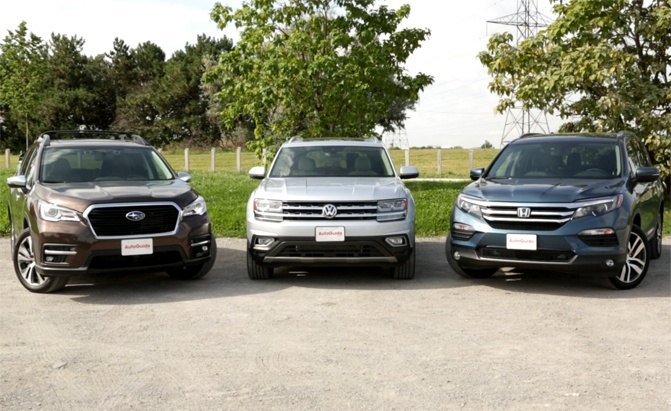

























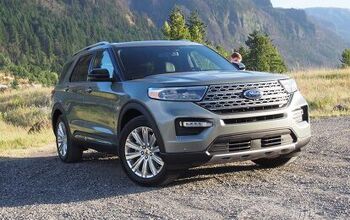
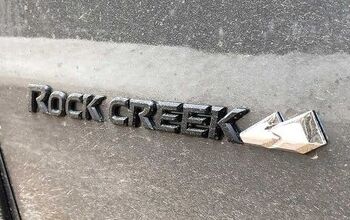


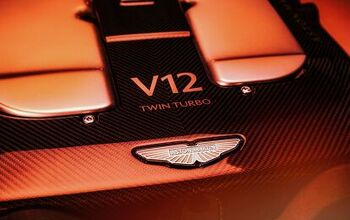

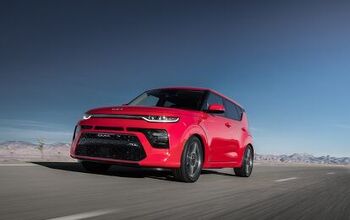

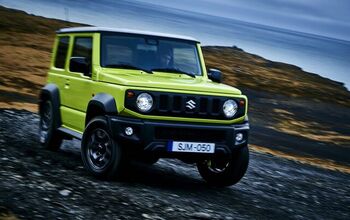


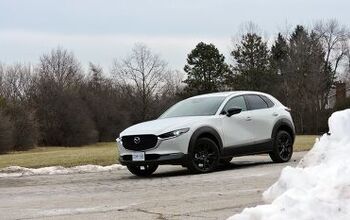
Comments
Join the conversation